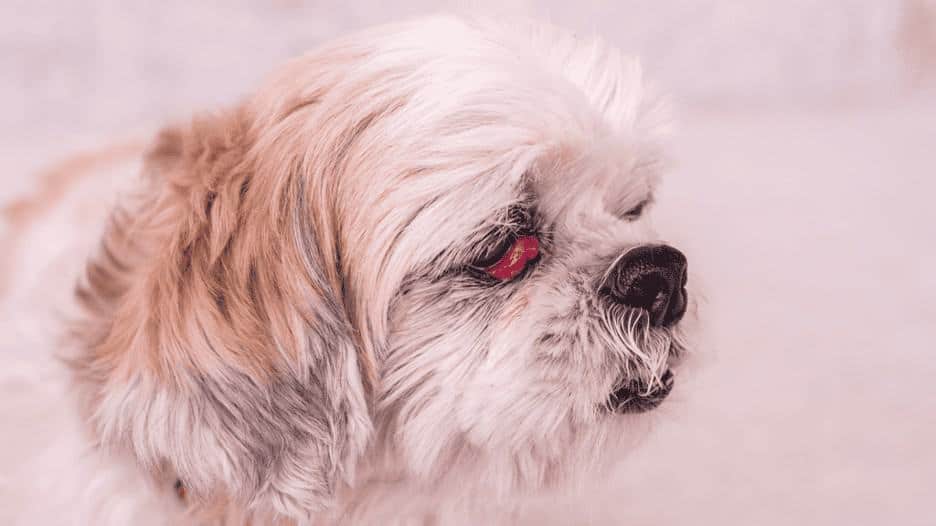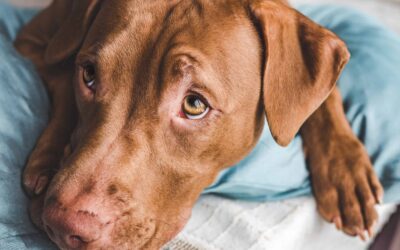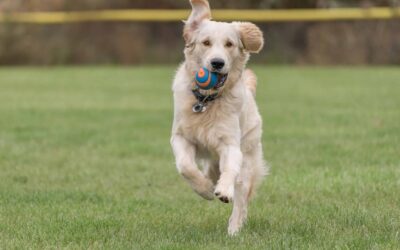What is Cherry Eye in Dogs? Causes, Treatment, & Cost

Cherry eye is a common condition that affects many dogs, often leading to discomfort and serious medical problems if left untreated. This guide will discuss the details of cherry eye in dogs, including its causes, symptoms, consequences of untreated cases, and effective treatment options. We will also explore the costs associated with surgery and discuss how pet insurance policies provide financial coverage. If you’re worried about your pup’s health and suspect cherry eye, continue reading for more information.
What Is a Cherry Eye?
Cherry eye, commonly known as Prolapsed Nictitating Membrane or Third Eyelid Gland disease in dogs, occurs when the tear gland protrudes out of its normal position within the third eyelid. It creates an unsightly red or pink mass near one corner of the eye that resembles that of a cherry.
Although alarming to witness, cherry eye is typically not life-threatening but requires prompt medical care to reduce complications and discomfort for your pet.
What Are the Symptoms of Cherry Eye?
Cherry Eye can be identified by a visible bulge or mass in the corner of your dog’s eye that protrudes and typically exhibits bright red or pink colors. Other possible symptoms include:
- Eye Irritation: Signs of eye irritation in dogs include excessive blinking, rubbing, or scratching at an affected eye and increased tear production.
- Discharge: An affected eye may produce either a thick mucus-like discharge or have an appearance similar to a watery discharge.
- Swelling and Inflammation: Protrusions may appear swollen and inflamed around their edges.
What Causes Cherry Eye in Dogs?
Cherry eye in dogs is generally caused by a weakness or dysfunction of the connective tissue supporting the tear gland in the third eyelid. Although its exact cause remains unknown, several factors could contribute to its development:
- Genetic Predisposition: Certain dog breeds are genetically predisposed to developing cherry eyes, such as Bulldogs, Cocker Spaniels, Beagles, Bloodhounds, Lhasa Apsos, Shih Tzus, and Boston Terriers, among others.
- Congenital Defects: Cherry eye may appear shortly after birth due to a congenital defect in the tear gland’s attachment.
- Weakened Connective Tissue: When connective tissue surrounding a tear gland weakens, its contents may slip out of place, leading to cherry eye.
Consequences of Untreated Cherry Eye
Cherry eye can have serious repercussions for your pet. Exposed tear glands and surrounding tissues may become dry and inflamed, potentially leading to secondary eye infections.
Persistent inflammation can also interfere with tear production and disrupt natural lubrication systems within the eye, causing dry eyes. If left untreated, this can lead to chronic corneal ulcers, impaired vision, or even permanent damage.
How to Treat Cherry Eye in Dogs?
When treating cherry eye in dogs, surgical intervention is the primary solution. One effective surgical technique is the mucosal pocket technique: this involves creating a small incision on one or both eyelids to form a pocket for prolapsed tear glands and suturing them back into place, ultimately returning them to their regular positions and alleviating cherry eye.
The mucosal pocket technique is widely accepted to be effective. It has minimal risks of complications when performed by an experienced veterinarian, though all surgeries do carry inherent risks, including infection, bleeding, or the possibility of recurrence. Before proceeding with surgery, discuss all options thoroughly with your veterinarian to ensure you understand all potential ramifications.
The cost of the mucosal pocket technique surgery can depend on many variables such as the experience of your veterinarian, location, and severity of the condition. Additional procedures or medications required afterward can also contribute to the overall cost. On average, it ranges between $500-1,500 per eye.
Do Not Wait for Dry Eye to Occur
Timely treatment of cherry eye is vital to prevent complications, including dry eye or secondary infections, from becoming severe or costly interventions. The delay could result in chronic discomfort for your dog as well as more complex and costly treatments being necessary in the future. If you suspect your pup has a cherry eye, seek professional veterinary assistance immediately so you can ensure timely and appropriate treatment is administered.
Pre and Post-Surgical Considerations
Before and after cherry eye surgery, your veterinarian may suggest specific pre and post-operative care for optimal comfort and recovery for your pet. A popular suggestion is prescribed eye drops/ointments, which help maintain eye moisture while decreasing inflammation and preventing secondary infections. Your vet will give instructions regarding the frequency, duration, and any additional post-op care requirements to help your pet recover.
Can Pet Insurance Cover Cherry Eye Surgery Costs?
Pet insurance can be an invaluable resource for covering the costs associated with veterinary care, including cherry eye surgery. The Illness & Injury Plan from Odie covers a wide range of conditions, including cherry eye in dogs. For an average of $45/month, you can get covered and reimbursed for surgeries related to your pet’s cherry eye.
How Can You Prevent Cherry Eye?
Cherry eye may not always be entirely avoidable, but there are steps you can take to help reduce your pet’s risk.
Regular visits with your veterinarian will help keep your dog in peak health and wellness, including eye examinations that may detect early signs of cherry eye or other eye conditions.
Odie’s Wellness Plan can help you get avoid eye conditions in your pet. It’s an add-on that can be purchased with any other Odie insurance policy to cover the costs of routine and preventative care.
What to Expect After Cherry Eye Surgery?
After cherry eye surgery, it is normal for your dog’s eye to appear red and swollen. Your veterinarian may prescribe painkillers or advise using a cold compress to ease discomfort and decrease swelling. Following any post-op care instructions provided by your veterinarian (for example, giving prescribed eye drops and refraining from activities that place strain on surgical sites) is also key to ensuring full recovery and prompt healing.
How Long Will My Dog Experience Pain After Undergoing Cherry Eye Surgery?
Your dog may experience some discomfort or sensitivity for several days following the procedure, and your veterinarian will provide any necessary pain medications to keep your pup comfortable throughout his or her recovery process. If you notice prolonged or severe discomfort, you should schedule an appointment with your veterinarian as soon as possible.
Will My Dog’s Eye Go Back To Normal After Cherry Eye Surgery?
Cherry eye surgery is typically successful, and the affected eye returns to its normal appearance. However, there remains a small risk of recurrence or complications. As a result, regular check-in appointments with your veterinarian will ensure optimal recovery while simultaneously identifying any potential problems that may arise.
Does Cherry Eye Surgery Hurt?
Cherry eye surgery should always be conducted under general anesthesia to ensure your dog remains pain-free during and post-surgery, and their veterinarian will prescribe appropriate pain medication to manage post-operative discomfort. Ensure that veterinary professionals prioritize your pet’s comfort and well-being during every stage of this surgical process.
At What Age Can My Puppy Undergo Cherry Eye Surgery?
Cherry eye can affect dogs of any age. For optimal results, it is generally advised that puppies reach a certain maturity before considering surgery. This is because tear gland development changes over time as puppies get bigger. Most veterinarians suggest waiting until your puppy reaches six months before performing surgery, but this timing will depend on your dog’s circumstances.
Get a quote for affordable pet insurance today, or contact your vet for additional coverage options!
You can also read more about surgery costs for your dogs here.



